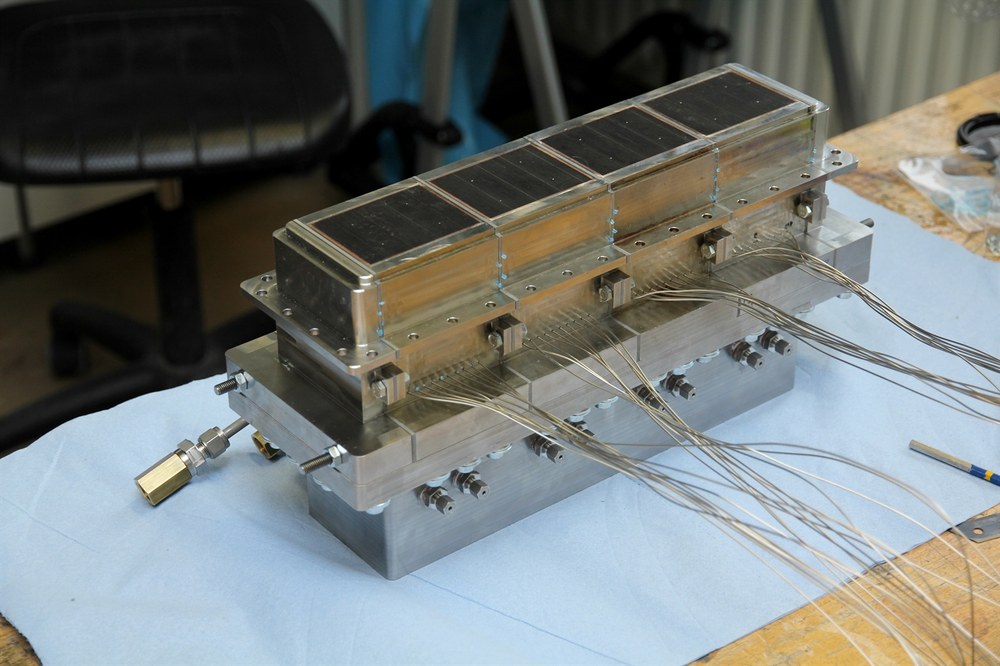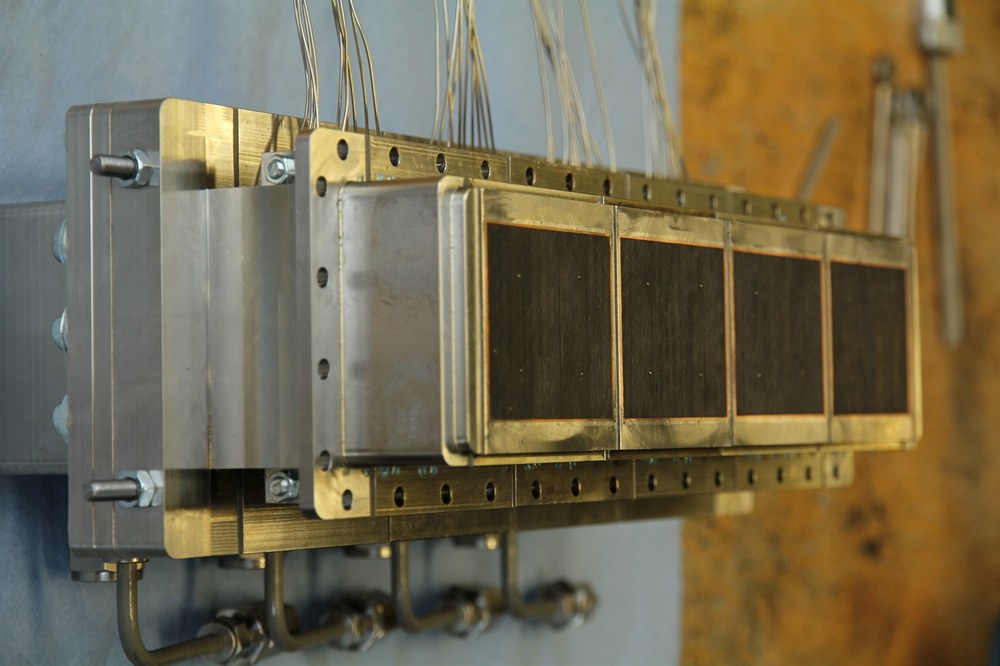Innovative Cooling of Rocket Combustion Chambers


Duration: 2008-2020
Transpiration cooling for the efficient cooling of rocket engine components under very high thermal loads promises increased engine performance and lifetime.
As part of the DFG Collaborative Research Center TRR 40: „Fundamental Technologies for the Development of Future Space-Transport-System Components under High Thermal and Mechanical Loads“, fundamental investigations of transpiration cooling are conducted in cooperation with the Institute of Aerospace Thermodynamics (ITLR) at the University of Stuttgart.
Permeable ceramic matrix composite is experimentally exposed to a hot gas flow to measure the cooling effect. The ceramic samples are perfused with cooling air exchanging heat with the surrounding porous solid as well as creating a protective cooling film between the sample and the hot gas flow. Early years concentrated on single transpiration cooled samples to develop analytical and numerical models to describe the transpiration cooling. The current investigations are focused on the cooling efficiency based on local variations of coolant mass flow rate. Supporting the experiments, numerical studies permit the theoretical transfer to transpiration cooling models of a 1:1 scale rocket engine combustion chamber.
The goal is to apply transpiration cooling to a combustion chamber in the most efficient way, combining the advantages of different cooling techniques.
